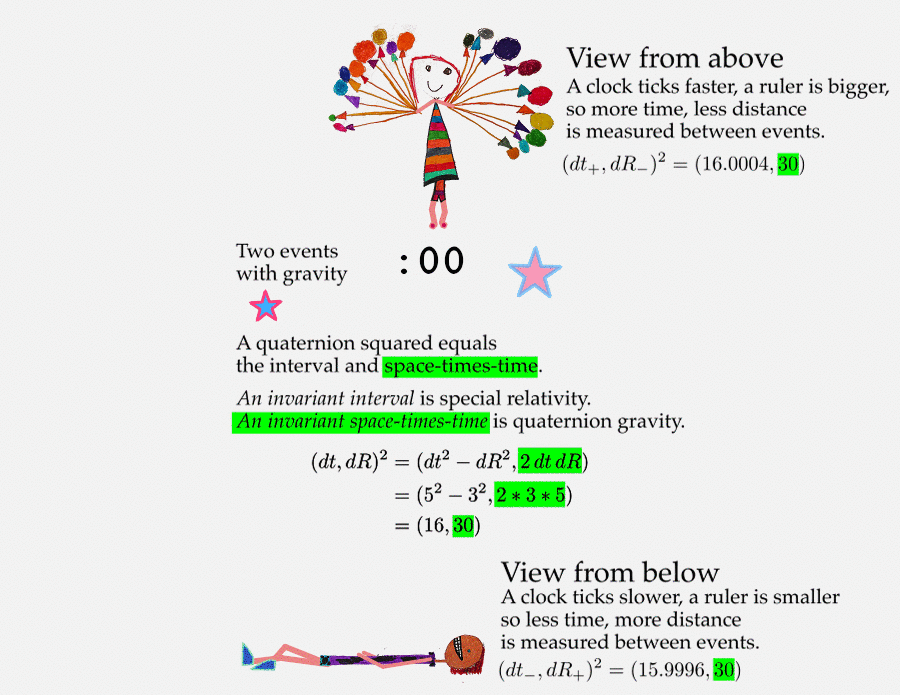Quaternion gravity
Looking down or looking from below changes time and space measurements in opposite ways.

If one kid is at a different height in a gravity field to another, then time measurements get smaller while spatial ones get bigger. That is standard physics (general relativity, GR).
The Quaternion Gravity (QG) proposal says the space-times-time values are precisely the same. With general relativity, this space-times-time is not mentioned, but it is almost - but not quite - the same.
Note: the numbers are far too big (off by 16 orders of magnitude, I just didn't want to write lots of zeros).
Page-cast
A brief explanation of this page.
For nerds
Special relativity could have been called "special invariance" because it is the invariant interval that all inertial observers agree upon. Invariance principles are deep insights into how Nature works. They are truths that do not change.
The quaternion gravity proposal postulates a new invariance principle: that different observers making measurements in different locations in a gravitational field will agree on an invariant value for space-times-time. Some care is required to say this in a coordinate-independent way. All observers are free to pick their coordinate system. There then exists a norm-preserving rotation in space such that the space-times-time measurement of one observer is exactly equal to another.
But how precisely does the interval change? For a spherically symmetric, non-rotating, unchanged source, only one dimensionless ratio comes into play: GM/c^2^R. Orbital systems are harmonic systems, suggesting that one use exponential of the dimensionless ratio. The requirement that the space-times-time term is invariant means the time term is the inverse of the exponential experienced by the space term, like so:

The resulting exponential interval has the same form as the Rosen metric. The Rosen metric makes the same experimental predictions as the Schwarzschild metric for all weak field gravity tests to first order Parameterize Post-Newtonian (PPN) accuracy. At second order PPN accuracy, the exponential interval predicts 12% more bending of light around the Sun. We have yet to achieve the precision to decide this issue on experimental data.
Special relativity is not a field field theory. It is a constraint on all field theories. The quaternion gravity proposal is also not a field theory. Like special relativity, it is a constraint on all field theories. As such, there is no need for a graviton. Quaternion gravity makes the search for quantum gravity moot.